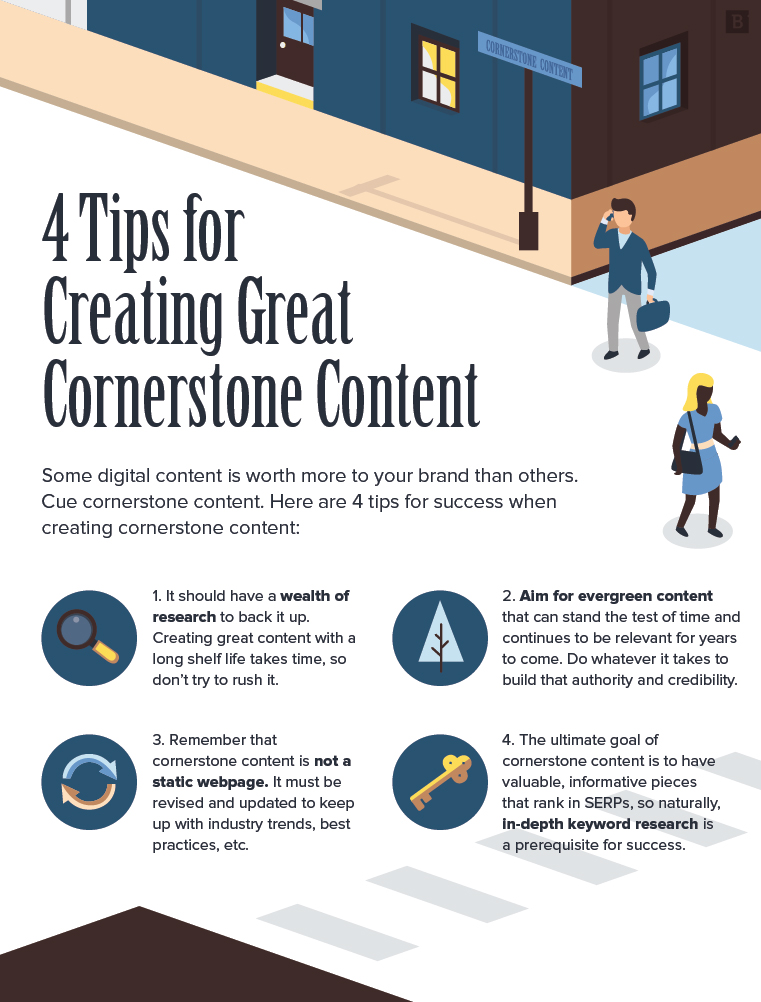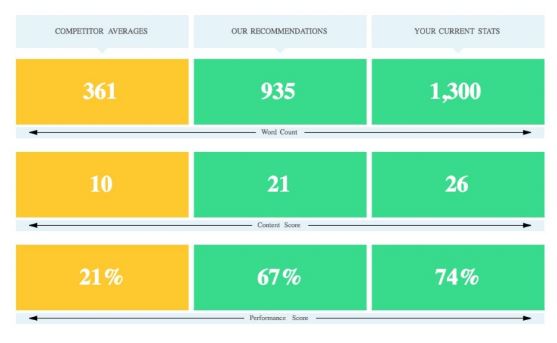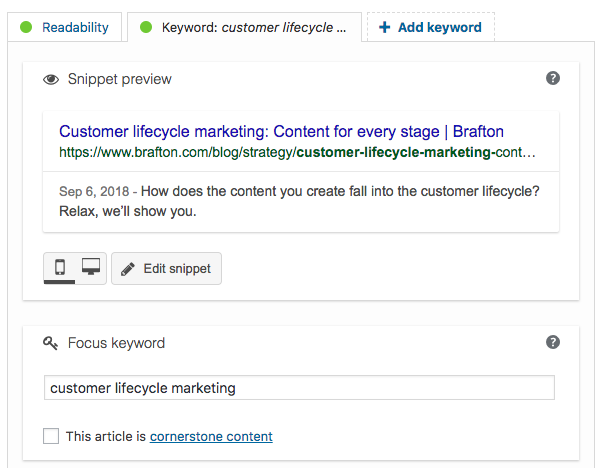Is all content created equal? Should one piece of collateral be more prioritized than another?
Your knee-jerk response might be to say, “Of course, I love all of my content!” or “You monster, don’t make me choose!”
As digital marketers and content producers, we may feel a certain, almost parental, attachment to our material, and how do you decide which you prefer over others?
But despite what our parents tell us, everyone has a favorite. Lisa over Bart Simpson. Marica over Jan Brady. Randy over Mark Taylor. Ivanka over Eric Trump. Sean over Julian Lennon. I could go on.
Digital content’s no different. Some assets inherently provide more value – or, at least have the potential to provide more value – than others. They’re more important and more visible to site visitors and sales leads. They encapsulate everything you want to convey about your brand and what you can do for your customers.
If you haven’t already guessed, we’re talking about cornerstone content, and if you don’t nail this stuff, you could be missing out on the chance to rank for your most relevant and competitive search terms and establish a solid foundation to build out the rest of your content ecosystem.
What is cornerstone content?
As the name implies, cornerstone content are the foundational assets that clearly establish who you are, what your brand messaging is and what value you offer to customers. If you were to distill your entire business into a handful of overarching talking points and value props, then you have the basis for your CC.
So, we’re talking home pages and other landing pages here, right? Not necessarily.
In theory, CC can be just about anything: blog posts, videos, infographics or, yes, home pages. It’s not the type of content that distinguishes CC, it’s the message. That being said, as we’ll soon see, given some of the parameters of CC, written material is best-suited for these means.
Cornerstone content needs to be informative, yet engaging. It answers common questions someone might have about your business and also showcases how your products or services solve some of the most pressing problems facing your clientele.
So, product pages, then? Not quite, or at least, it doesn’t have to be.
CC may cover topics that are related to your business practice but not necessarily specific or unique to your services. For instance, if your creative marketing team created the robotic process automation article to end all robotic process automation articles, that could very well be considered CC even if it never once mentions your brand.
It’s informative, it’s engaging, it establishes your business’s high level of expertise in this field and, since it provides a rich, detailed explanation of an emerging technology that gets a lot of search traffic, it’s all but guaranteed to be a highly sought after piece of content for years to come.
You’re going to be linking back to that bad boy just about any time RPA comes up in your blogs or on social media. It’s a digital marketing golden goose. Who cares if it’s not explicitly tied to your products or services?

Too brand or not too brand
For many businesses, though, cornerstone content will be brand-specific, detailing in no uncertain terms what they can offer their clients. This material provides basic, essential information that any potential customer would need to know about your brand, which you can then build upon with additional resources and content – hence, “cornerstone.” It can operate as a hub of sorts, with a solid foundation to connect related content that may not be quite as exhaustive in scope, but still extremely important and informative.
With that in mind, pages and material higher up in your site hierarchy lend themselves better to CC. Something can’t really be considered a pillar of your brand messaging and overall digital content strategy if it’s buried deep on your site, now can it?
In that particular case stated above, you’re dealing with content that naturally lends itself to “cornerstone” status because it’s bound to get a high level of search traffic. In most instances, though, creating CC will involve taking webpages, articles, videos, infographics – whatever material you feel best reflects your brand and mission statement – and optimizing them for search. It’s about giving that content the best chance to be found online because that’s the material that communicates your brand’s value in the clearest terms possible. Once a potential customer finds that content, they’ll understand what you’re all about.
Why is cornerstone content important for SEO?
It shouldn’t come as any surprise that CC is a crucial piece of today’s digital marketing puzzle. We’re always talking about the importance of high-quality, informative content and how heavily weighted subject matter expertise and depth is in Google’s algorithms. Surface-level material won’t cut it, and the more your work digs into a particular topic without venturing into the bone-dry world of academic writing, the better your webpage will rank.
In that sense, anything that could truly be considered “cornerstone” should perform extremely well with Google and continue to pop up (hopefully) on the first page of search results for associated search terms.
Fielding your content dream team
There’s an equally – if not more – important reason to consider the SEO impact of your CC. This material is the very best your website has to offer. It’s Michael Jordan, Lebron James and Hakeem Olajuwon all rolled up into one. It perfectly explains your brand values, service offerings and mission statement. It tells your customers and potential customers everything they could ever want to know about your business. But none of that will matter if no one can find it.
Optimizing your CC is essential so it doesn’t get lost in the depths of the internet. Otherwise, all of that fancy writing and painstakingly crafted messaging will be worth next to nothing.
When properly executed, CC hits on all the major criteria that Google considers when ranking content. Is it well-written? You bet. Is it informative? Oh yeah. Does it demonstrate authority and a depth of knowledge around a specific topic and related search terms? Abso-frickin-lutely.
Cornerstone content in action
Having said all of that, what does a real-life example of CC look like? Over at Yoast (who seem to have made CC development a pet project of theirs, btw), their crowning achievement in CC is an exhaustive guide on SEO copywriting. When I say exhaustive, I mean exhaustive. Get a load of this thing. If and when you finish reading this bad boy, you’ll feel like an expert on the subject yourself.
But is it the sheer length of the article that raises it up to the rarified air of “cornerstone” status? There’s a bit more going on here. If I had to go out on a limb, I’d say the keyword they’re targeting here is “SEO copywriting.” Just a hunch.
Based on that one phrase, you can pull a ton of related questions that site visitors might be asking themselves:
- What, exactly, is SEO copywriting?
- What’s the best way to approach SEO copywriting?
- Where do search keywords come into play?
Yoast’s article is essentially a very long and very complete answer to all the potential questions related to “SEO copywriting.” You would be hard-pressed to find a more fully composed breakdown of the topic (well, aside from this and this, anyway).
That example provides a pretty reliable framework to follow when creating CC of your own:
- Step 1: Find a target keyword
- Step 2: Identify all common questions related to that term.
- Step 3: Answer those questions as fully as possible.
Don’t sleep on your linking strategy
Really great cornerstone content – we’re talking earth-shattering stuff here – will find an audience with other members of your industry. They may even begin linking back to it on their own sites because you’ve covered a particular subject so well that they cite you as an expert source.
Cultivating inbound links from respected sources is great for your organic ranking and helps your site build its Domain Authority. This is a huge coup for your site ranking, so take the time to create content that’s so well-researched and comprehensive that your peers take notice.
The more informative and valuable your content is, the higher quality your backlinks will be. Build up those credible links and you’ll be sitting pretty as far as search ranking goes. Any way you slice it, good CC builds strong Domain Authority.
Then there are internal links to consider. CC pieces are natural candidates for backlinks since they provide comprehensive coverage on specific topics. Any time that subject comes up in a blog, you can link back to your CC.
We’ve talked about how important linking – both internal and external – is to search ranking before, and CC sets you up to capitalize on both fronts. So, yeah, we’d say CC is pretty damn essential when it comes to site performance.
Why do search engines like cornerstone content?
Google’s algorithms are by no means perfect (not yet, at least. But we have faith that our search engine overlords will get there one day).
From time to time, they need to help sorting the seemingly limitless webpages tackling the same topic and determining which ones are the most important and relevant to users.
CC can help cut through all of that noise – even noise created by your own blogs and articles – and showcase material that meets all of the most important criteria for high-ranking webpages. By focusing on a half dozen or so core articles and ironing them out to perfection, you’re essentially telling Google, “This is the best, most informative content related to these search terms.” It’s a win-win for both you and Google. Everyone’s happy.
How do you create cornerstone content?
I think we’ve pretty well established that CC is a crucial part of any successful digital marketing strategy (one might even say it’s a cornerstone of content marketing best practices).
So, how do you actually go about creating the kind of high-quality content worthy of that moniker?
The ingredients of good CC don’t differ all that much from any other pages or assets hosted on your site. Let’s start with the obvious: It needs to be good. Not just good. Damn good. Both in terms of quality and depth.
You probably noticed we never listed white papers as a potential type of CC. Why? Setting aside that white papers tend to be gated and thus not ideal for these purposes, they also tend to veer a little much into dry writing territory. Are there engaging white papers out there? Of course. But the medium doesn’t lend itself well to this particular type of content.
If you’re planning to create CC from scratch, you better channel your inner Faulkner, because that prose needs to sing, baby. It doesn’t matter how technical your topic is, the writing needs to draw in readers. If anything, it’s even more important to have engaging, accessible prose when dealing with subjects that may be daunting to the layperson.
When finished, your content should cover so much ground that it’s the de facto bible for that particular topic. You want your content to be tailor-made to be linked back to from a wide variety of sources. Whenever that subject comes up, your page should be relevant, no matter what angle it takes on the topic or how authoritative the source is.
How can content marketing software help?
If you need help identifying what ground your content needs to cover, consider employing a tool like MarketMuse to review what you’ve written and provide feedback and suggestions on how to optimize it for searchability. We all have blind spots, even with topics we think we know like the back of our hands. MarketMuse helps bring those missed opportunities to light.

MarketMuse also helps answer the question of how long, exactly, your CC needs to be. Saying that content needs to be exhaustively informative is one thing, but how does that translate into raw word count? MarketMuse offers suggestions on content length, so you can target a very specific number of words.
That being said, don’t worry about hitting that number exactly. Treat it more as a guide, just as long as you cover each topic area and answer all related questions.
Yoast SEO is another content marketing tool that is pretty useful for creating CC. In fact, users can actually tag a specific webpage or article they’re working on as CC, and the platform will analyze the prose, format, media, subject matter and other criteria with a more diligent eye. Like MarketMuse, Yoast SEO offers a wealth of valuable feedback on your content so you can fine tune each piece to maximize its search ranking.

Of course, content marketing software can only do so much. You’ll have to get hands-on with your CC to add the kind of depth, authority and relevance that Google’s algorithms are looking for. A few crucial points to keep in mind there:
- It should have a wealth of research to back it up. Creating great content with a long shelf life takes time, so don’t try to rush it.
- Aim for evergreen content that can stand the test of time and continues to be relevant for years to come. Painstakingly research your content to comprehensively answer the most common questions your audience may have. Do whatever it takes to build that authority and credibility – interview internal subject matter experts, do your own independent research, etc. – even if it means delaying publication a little bit.
- Remember that cornerstone content is not a static webpage. It must be revised and updated to keep up with industry trends, best practices, common customer questions and technological advancements.
- The ultimate goal of CC is to have valuable, informative pieces that rank in SERPs, so naturally, in-depth keyword research is a prerequisite for success. Creating solid CC takes a lot of hard work, and you want to be sure that it pays off by ranking for terms that people are actually searching for.
Like any other optimized material, CC should be as media-rich as possible, without becoming distracting or too busy. Including custom images, infographic, videos, embedded tweets and other media formats in the body of your article – again, with a restrained hand – helps craft a more compelling piece of content that’s more likely to be shared and linked to on other sites.
Cornerstone content takes a lot of time and effort to get right, and there really isn’t a way to speed up the production process without sacrificing the quality and depth of knowledge that this material requires. This isn’t assembly-line content that can roll onto your site ready to grab a few eyeballs and quick wins. It’s in it for the long haul, establishing your brand’s credibility and expertise, building your site’s Domain Authority with quality links and establishing a launching pad for other website content.
Is that worth the extra effort? You bet it is. Well-crafted CC puts you in a better position to rank for even highly competitive search terms. So, roll up your sleeves, queue up the “Rudy” soundtrack and get to it.





